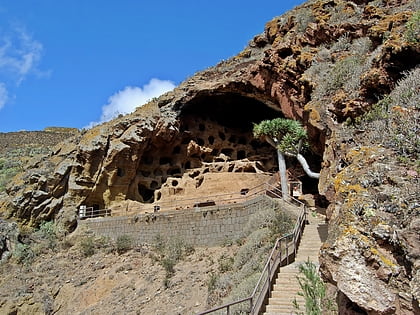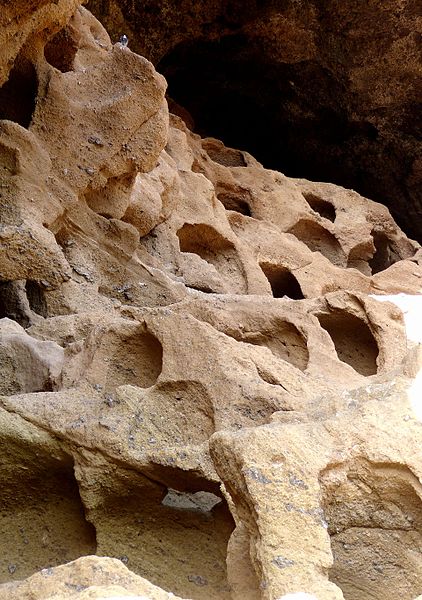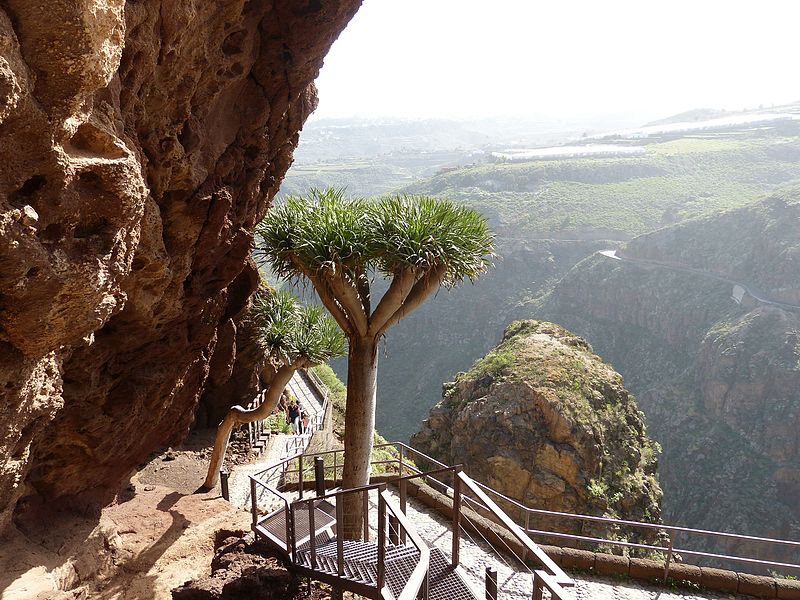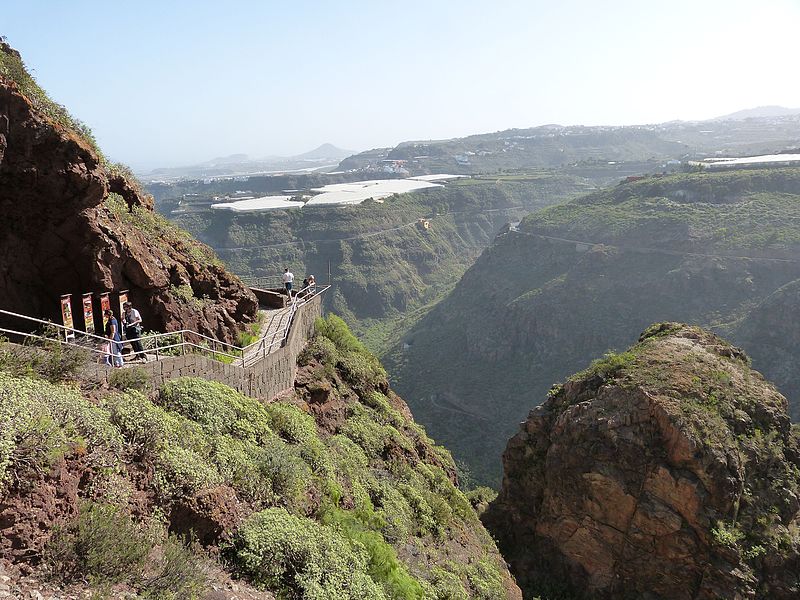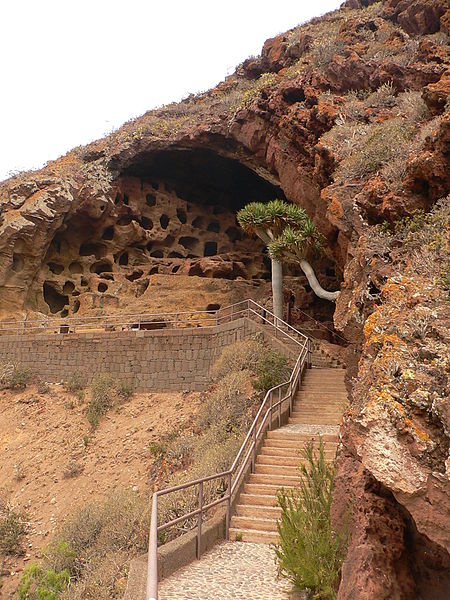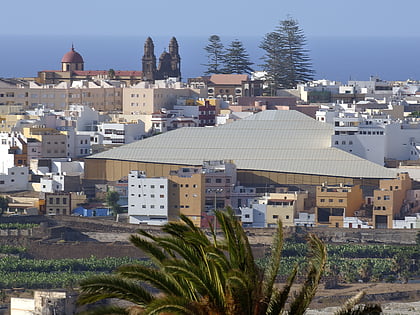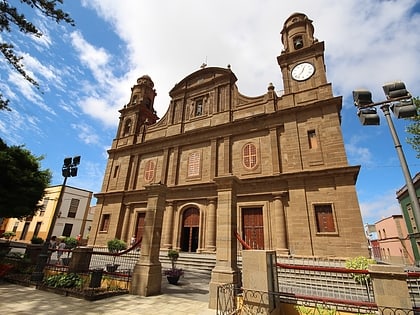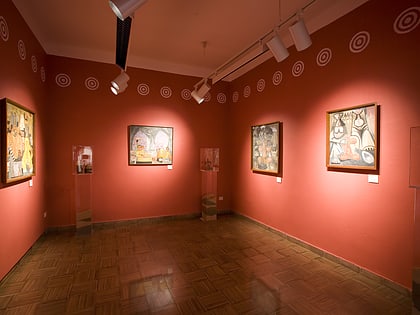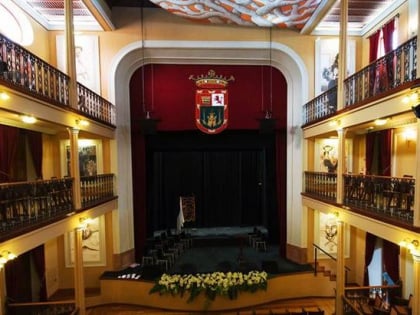Cenobio de Valerón, Gran Canaria
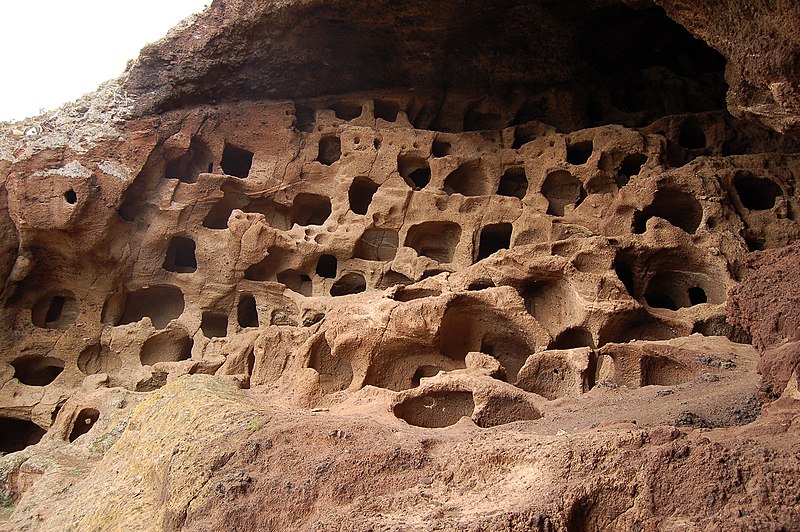
Facts and practical information
Nestled in the rugged landscapes of Gran Canaria, Spain, the Cenobio de Valerón stands as a captivating testament to the island's pre-Hispanic past. This archaeological marvel, often referred to as the 'Granary of the Guanches', offers a unique glimpse into the lives of the indigenous inhabitants who lived on the island before the Spanish conquest.
The Cenobio de Valerón is an expansive collective granary, comprising around 300 compartments or silos carved into the volcanic rock face. These silos were used by the ancient Canarians to store grain and other foodstuffs, safeguarding their harvests from both the elements and potential pillagers. The site's strategic location, tucked away in a steep cliff within the beautiful Barranco de la Cueva ravine, made it an ideal storage facility.
Today, the Cenobio de Valerón is a significant tourist attraction, drawing history enthusiasts and curious travelers alike. Visitors can explore the network of chambers interconnected by a series of steps and walkways. Information panels provide insights into the agricultural practices, social organization, and the cultural significance of this granary for the Guanche society.
The site is well-maintained and equipped with a visitor center, where guests can learn more about the archaeological site's history through exhibits and multimedia presentations. The center also offers guided tours, which are highly recommended to fully appreciate the historical context and engineering ingenuity of the Cenobio de Valerón.
As an open-air museum, the Cenobio de Valerón is open to the public year-round, though it's best to visit during the milder months for a comfortable experience. Remember to wear sturdy shoes as the terrain can be uneven, and bring a camera to capture the stunning views of the surrounding valley.
Cenobio de Valerón – popular in the area (distance from the attraction)
Nearby attractions include: Painted Cave, Church of San Juan Bautista, Iglesia de Santiago de los Caballeros, Basilica de Nuestra Senora del Pino.
